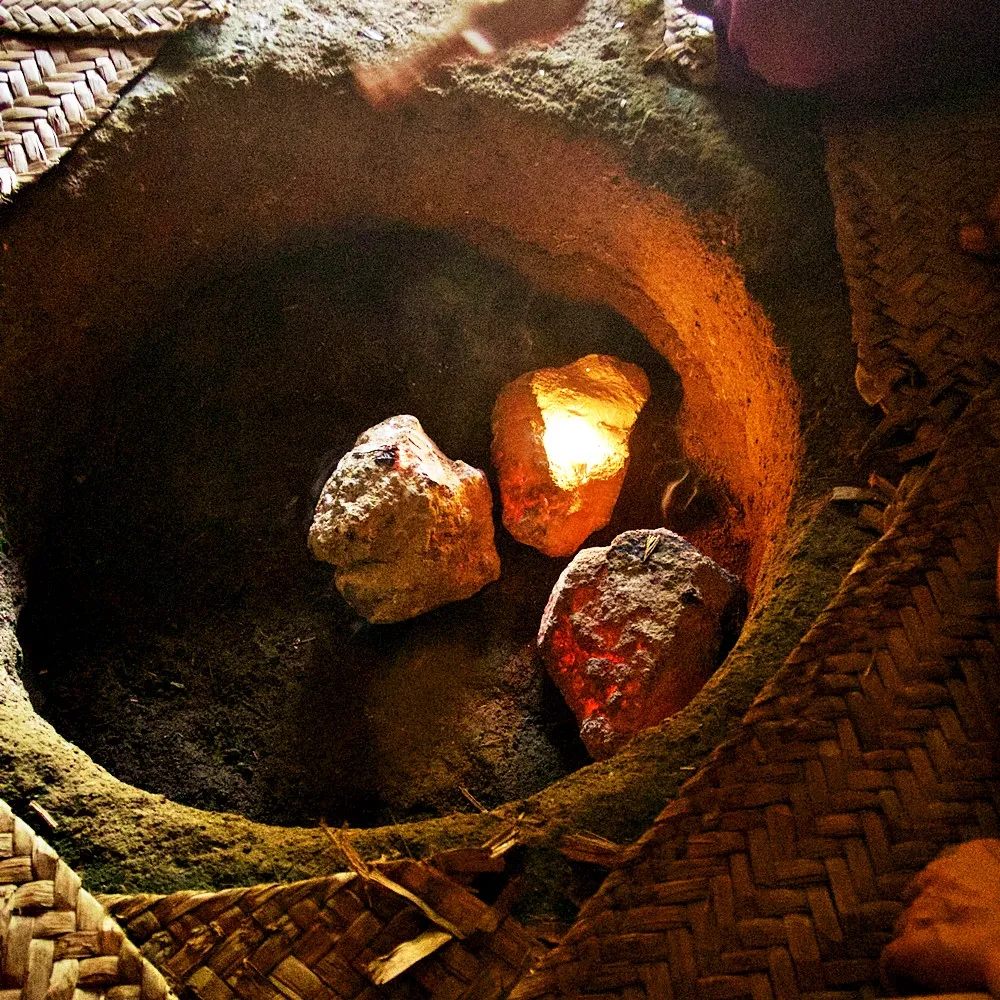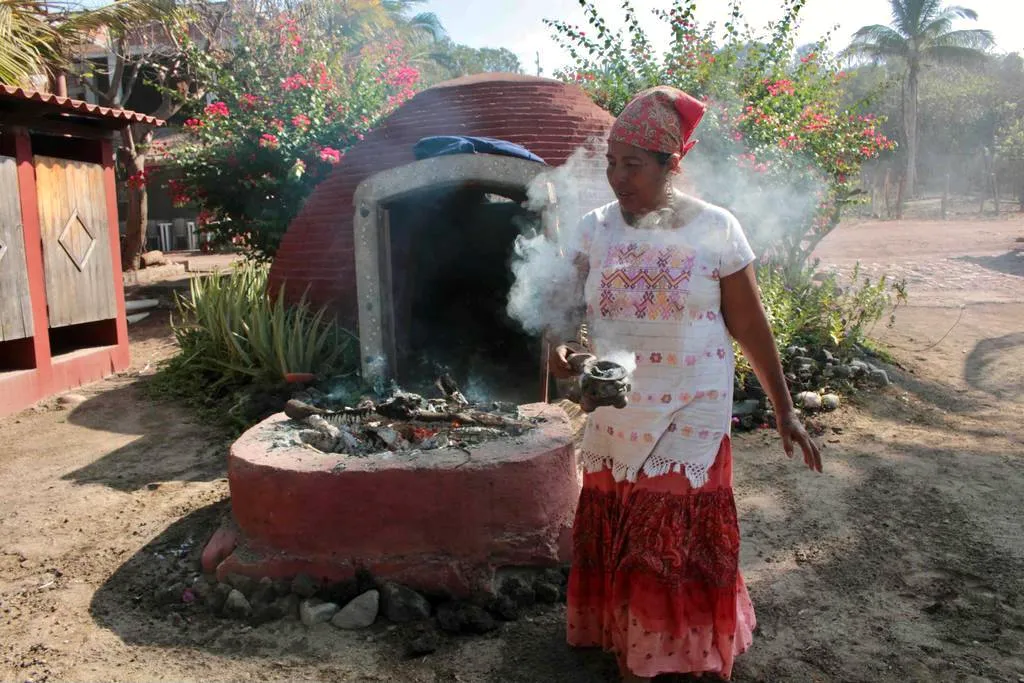In Náhuatl, a native Mesoamerican language, the word temazcal comes from the word temāzcalli, meaning “house of heat.” The Temazcal, a dome-shaped sweat lodge usually made of volcanic rock, cement, wood, or mud, is an integral part of a Mexican ceremony dating back to the 1500s. Because these precolonial sweat lodges have both spiritual and physical benefits, they are still utilized today throughout Mexico and parts of Central America.
The physical benefits of the temazcal are much easier to summarize, so we’ll tackle that before getting into the spiritual cleansing that is the ceremony itself.
The temazcal has been proven to be beneficial by modern medicine. The volcanic stones in the temazcal emit infra-red rays that are healthy for the body. Infrared therapy is used as an alternative treatment for varying health conditions, including joint stiffness and fibromyalgia. Infrared rays can detoxify, relieve pain, induce relaxation, improve circulation, boost the immune system and lower blood pressure. The steam in the temazcal is very beneficial too. It adds warmth and moisture to the air, which loosens mucus in your airways and lungs. Steam improves breathing. Steam baths or saunas are an excellent addition to treatment plans.
The temazcal ceremony requires a shaman or the guardiana of the temazcal to guide the experience. Guardiana is a feminine noun because women are supposed to lead the ceremony. In the legend of the temazcal, Quetzalcoatl, gave women the Temazcal. Quetzacoatl is the Mesoamerican serpent god who is associated with the planet Venus and the cycle of death and rebirth.
However, there is a different ritual, the blessing of the four directions, that some perform before entering the temazcal. Lupita Maldonado, guardiana of Temazcal Ba’duhiini in Guerrero, Mexico, performs the ritual:
“…And that’s the ceremony to ask permission of the four directions north, south, east and west. Here we ask permission of the guardians of each direction to bless this ceremony and be with us. And also we do an offering to Mother Earth with flowers, fruits and seeds. And we do a deshumado, a cleansing and purifying of the energy with the smoke of Copal” (Roots & Rituals Podcast).
Copal, a word also derived from the Náhuatl language, is a resin collected from trees. It has documented use in pre-Columbian Mesoamerica as a spiritual cleanser in ancient Aztec and Mayan ceremonies.
The four cardinal directions are fundamental to Mesoamerican religion and cosmology, and each direction even has its own myth in Aztec mythology. This considered, the blessing of the four cardinal directions is yet another practice that keeps ancient customs alive.

Subscribe To Our Newsletter
Subscribe for exclusive insights, upcoming panels, inspiring stories, and opportunities to support communities driving real change.

Like most any indigenous spiritual ritual, the blessing of the four directions and the ceremony of temazcal takes the time to honor the earth and remember the ancestors. During the blessing of the four directions, participants gather in a circle, ask for guidance and protection on their journey and place an offering on the ofrenda, which is stationed in the middle. The offering can be small and personalized for different ancestors. What is essential is showing appreciation and exchanging gifts with the ancestors.
The temazcal only has one small entrance that is shut tight until the ceremony is done, and it is time for all inside to remerge, reborn. Participants crawl inside, returning to the mother. The temazcal itself represents a womb, and all those who enter come with the intention to heal their relationships and be reborn. The enclosed dark space, the herbally infused steam from the volcanic rocks, the drum and song all help simulate going back into the womb. The experience grounds you in your body, purges the heavy emotions carried in your body, and connects you to your community.
The singing, the drumming, the collective voices and subsequent vibrations are key to the temazcal experience. All participants are encouraged to make noise once the guidana starts the drum to begin the ceremony. In doing so, not only are you contributing to the frequency of the shared space, but you are also releasing what does not serve your mind, body, and spirit.
Another central principle of Indigenous practices and, subsequently, the temazcal is communal work. You do not go in and endure the darkness and heat on your own. You are in tribe with others who seek to purge and heal themselves to benefit their mind, body, spirit, and community. The camaraderie, the communal experience and the connection help get you through the rebirth. You are joined in intention, song, and vibration.
Lupita Maldonado perfectly explains the importance of community,
“A temazcal is not an individual practice, all temazcales are done communally in a group collectively because community is the medicine tool and we need to remember that we are not alone. Solitude is not our origin” (Roots and Rituals Podcast).